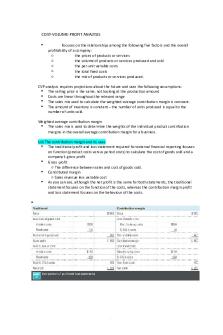Blind Spots Chapter 5 Summary PDF

| Title | Blind Spots Chapter 5 Summary |
|---|---|
| Author | Anne Perez |
| Course | Ethics and Social Responsibility |
| Institution | University of Pennsylvania |
| Pages | 1 |
| File Size | 29.2 KB |
| File Type | |
| Total Downloads | 18 |
| Total Views | 149 |
Summary
Summary of assigned reading homework...
Description
Blind Spots Chapter 5: When We Ignore Unethical Behavior Chapter 5 of Blind Spots analyzes the different situations within the corporate world in which individuals do not notice unethical behavior. The author categorizes overlooking unethical behavior into four general causes: motivated blindness, indirect blindness, slippery slope, and valuing outcomes over processes. Motivated blindness refers to the tendency for people to overlook unethical behavior when it isn’t in their best interest, as they are busy paying attention to their own goals. With indirect blindness, people tend not to notice unethical actions when there’s an intermediary (i.e. another company or person), making the unethical act indirect for the focal firm. Slippery slope is when unethical behavior goes unnoticed because it occurs gradually, whereas an abruptly unethical act would stand out more easily. Valuing outcomes over processes can also impair our assessment of unethical behavior and is referred to as the outcome bias. Due to this bias, we often base unethical behavior on whether the action causes harm, rather than judging the process by which the outcome was achieved. These findings hold important value in the working world, because they emphasize the notion that employees not only ignore unethical behavior, but also that they aren’t aware of their lapse in judgment. To counter these issues, employees should be educated about the behaviors that may hold them back from noticing and reporting unethical behavior. Policies should also be adapted to accommodate these flaws, and employees and employers should refrain from actions or situations in which their ethics may be compromised....
Similar Free PDFs

Blind Spots Chapter 5 Summary
- 1 Pages

Spots Publicitarios
- 3 Pages

5- Summaries chapter 5-Summary
- 5 Pages

Chapter 5 summary
- 7 Pages

Chapter 5 . Metabolism Summary
- 3 Pages

Face Blind Assignment
- 5 Pages

CVP MANAGEMENT Chapter 5 summary
- 8 Pages

Chapter 5 - Summary Mktg - Mktg
- 5 Pages

5- Summaries chapter 8-Summary
- 3 Pages

Summary Chapter 1-5 Aamodt
- 10 Pages

Chapter 5 summary - Grade: b
- 1 Pages

\"blind with sight\" essay
- 4 Pages
Popular Institutions
- Tinajero National High School - Annex
- Politeknik Caltex Riau
- Yokohama City University
- SGT University
- University of Al-Qadisiyah
- Divine Word College of Vigan
- Techniek College Rotterdam
- Universidade de Santiago
- Universiti Teknologi MARA Cawangan Johor Kampus Pasir Gudang
- Poltekkes Kemenkes Yogyakarta
- Baguio City National High School
- Colegio san marcos
- preparatoria uno
- Centro de Bachillerato Tecnológico Industrial y de Servicios No. 107
- Dalian Maritime University
- Quang Trung Secondary School
- Colegio Tecnológico en Informática
- Corporación Regional de Educación Superior
- Grupo CEDVA
- Dar Al Uloom University
- Centro de Estudios Preuniversitarios de la Universidad Nacional de Ingeniería
- 上智大学
- Aakash International School, Nuna Majara
- San Felipe Neri Catholic School
- Kang Chiao International School - New Taipei City
- Misamis Occidental National High School
- Institución Educativa Escuela Normal Juan Ladrilleros
- Kolehiyo ng Pantukan
- Batanes State College
- Instituto Continental
- Sekolah Menengah Kejuruan Kesehatan Kaltara (Tarakan)
- Colegio de La Inmaculada Concepcion - Cebu



